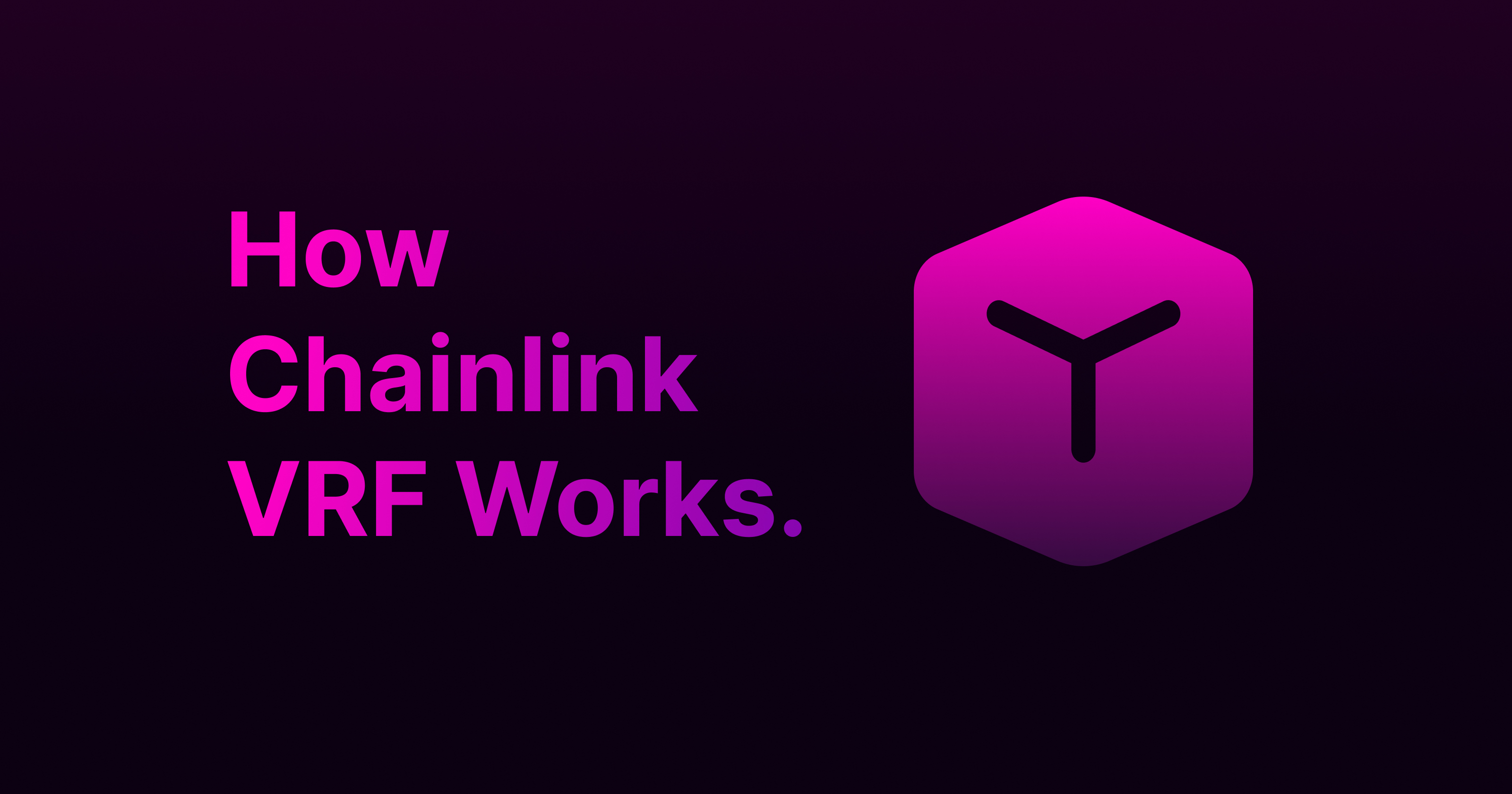How Chainlink VRF Works
 Natachi Nnamaka
Natachi NnamakaTable of contents

Introduction
Chainlink VRF (Verified Random Function) was developed to provide a source of randomness that is resistant to manipulation. It is a provably fair and verifiable random number generator (RNG) that enables smart contracts to access random values without compromising security or usability.
The importance of using Chainlink VRF is to prevent bad randomness. Because random numbers generated from Chainlink VRF cannot be manipulated by nodes or attackers unlike generating random numbers from on-chain values like block-hash and block-timestamp.
How does Chainlink VRF Work
Chainlink VRF is a verifiable random function (VRF) that provides smart contracts with access to tamper-proof randomness. It works by using a combination of on-chain and off-chain components to generate and verify random numbers.
The process begins with a consumer contract requesting randomness from the VRF coordinator. The VRF coordinator then triggers an event that is picked up by the Chainlink VRF off-chain service.
The off-chain service generates a random number using a combination of block data and its own private key. The private key is committed to on-chain by publishing the corresponding public key. This ensures that the randomness cannot be manipulated by the off-chain service.
The off-chain service then sends the random number and a cryptographic proof of its generation to the VRF coordinator. The VRF coordinator verifies the proof and, if valid, sends the random number to the consumer contract.
This process is self-auditing, meaning that it does not require external verification. The VRF coordinator verifies the random number proof, and the consumer contract can verify that the random number was generated by the VRF coordinator.
Conclusion
Chainlink VRF is a powerful tool that is especially useful for applications that require a high degree of randomness, such as gaming, gambling, and lotteries. Chainlink VRF is also becoming popular in the web3 space. Chainlink VRF can be used to create blockchain applications that are resistant to front-running, bad randomness and other forms of manipulation.
Subscribe to my newsletter
Read articles from Natachi Nnamaka directly inside your inbox. Subscribe to the newsletter, and don't miss out.
Written by

Natachi Nnamaka
Natachi Nnamaka
I am a junior blockchain developer with a background in frontend development. I have a passion for technology and have always been interested in the potential of blockchain to revolutionize various industries. I have a strong foundation in frontend technologies such as HTML, CSS, and JavaScript, and have recently been working on expanding my skillset to include blockchain development. I am excited to continue learning and growing in this field and contribute to the development of innovative blockchain solutions.